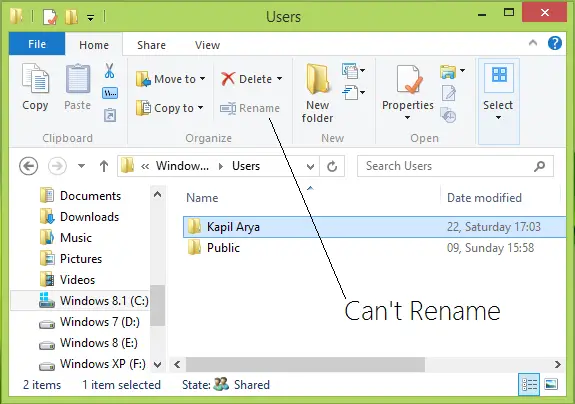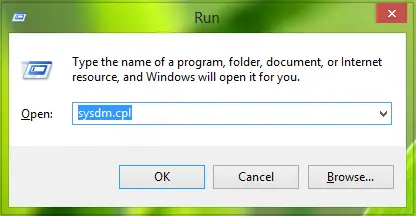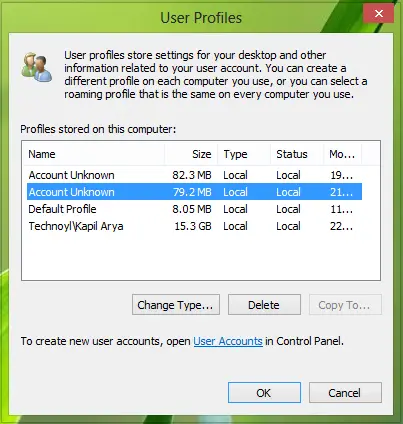Are you missing user accounts from your PC after upgrading to Windows 11 or Windows 10? If, after upgrading your Windows computer to the next version, you find that one or more User Accounts are missing or have disappeared, then this post will be able to help you fix the issue.

User Accounts missing after upgrading
In the course of the issue, we found that the user account which we were missing had its entry under the hood of the Users directory. We also could not rename the entry because rename option is greyed out for it. Also, when we tried to create a new user account with the same name, obviously, Windows didn’t allow us to do so.

Then how do we solve this issue? Well, in this article we tell you the way to fix this. After doing a bit of research, we found that the User we were missing was still available inside Windows but it has lost group membership, i.e. there is no group to which this user belongs, that’s why it is not available to you. You can check this in the following way:
1. Press Windows Key + R combination, type put sysdm.cpl in Run dialog box and hit Enter to open the System Properties.

2. In the System Properties window, switch to Advanced tab, under User Profiles, click Settings.

3. Now, you can see all the user accounts on your system. The Account Unknown here is the user account that doesn’t belong to any group.

So if by anyhow we add that user to any group, we can recover it as our Local User account. Here are the steps you would need to follow in order to bring the missing user account in a group:
1. Open the administrative Command Prompt.
2. Paste the following command and press Enter:
net localgroup "Administrators" [Computer Name]\[Missing User] /add

In the above command, you have to substitute [Computer Name] with your computer name and [Missing User] with the Local Account user name, which you lost after the upgrade. After a reboot, you can use the Recover user account option, which was missing after the upgrade.
I hope this helps!
Related: How to recover deleted User account profile in Windows.
Hi,
after upgrading to win 8.1 I faced a black screen problem and I solved the matter that time but,i noticed that when try to login it takes too much time to show the desktop before it was like immediate.
any solution for that?
^^ You can run SFC /SCANNOW command in the administrative Command Prompt and see if that helps :)
Did they lost their minds!?!? I performed upgrade to my mother laptop. After upgrade she lost her documents, account is frozen etc. F….. they are stupid or what?
Try this… 1. Login as Guest 2. Go to Control panel and go to User Accounts…
3. In this window you may able to see only Guest as active account.. (Don’t
worry).. 4. Click on “Manage Another Account” link… 5. You will be prompted to
enter the previous “Admin password”… (if it was present)… 6. Enter previous
password and wait until the user setup finish… 7. Log off from guest account
and login as Admin… Enjoy.. (It worked
for me… )
when I did the Administrator Command Prompt the response I got was: NET LOCALGROUP [comment: “text”]] [/domain]
groupname [/domain]
I typed in “/ADD” and got that it is “not recognized as an internal or external command”
now what?
here is my User Profiles. did I type the wrong fields in?
BALB/bbalk
BALB is the computer name
bbalk is the missing user
RIGHT?
^^ We didn’t checked it on a domain based system so can’t comment for that. Also I suggest you to run the command as it is as mentioned in the article, it may of may not be case sensitive :)
You wrote “After a reboot, you can use the Recover user account option which was missing after upgrade.” I did the steps up to and including the reboot, but how do I find out how to”Recover user account”? I can’t find where that command is for Windows 8.1.
^^ Since you’ve tried all the steps, recheck the window shown in step 3, can you still see if there is Account Unknown option? If you can’t see that option, it means that missing user account is already added to Administrators group.
in the User Profiles it shows 5 listed. I only create 3 before Windows 8.1 upgrade.
There is nothing that looks like option. Here is what I see.
Account Unknown 384 mb local backup
Default Profile 1.28 mb local local
GENES_DELL_PCGene 33.5 GB local local
GENES_DELL_PCSerraReg 218 MB local local
GENES_DELL_PCSharon 37.7 GB local backup
The one I’m trying to restore is the Sharon account. If Sharon signs on it generate a new account with no files.
I just want the two accounts Gene and Sharon. My account Gene is still working but SerraReg is not neither is Sharon.
Thank you for any help you can give. is there a way to post a image of the User Profiles screen in this site?
I’m guessing that if Sharon Status was not Backup it would work. How do I get it to be Local?
I could not get this to work. I have tried 7 times and it says not responding everytime I hit the “settings” button. Any ideas?
The accounts get disabled during the clean install
How to enable these accounts in Windows 8/8.1
Control Panel -> Administrative Tools -> Computer Management
Expand Local Users and Groups
Click on Users
Select the local user with the missing profile
click More Actions for the user (under the Action pane on the far right corner)
Select properties for this user
uncheck the option “Account is Disabled”
You can now use this account to login as a local user once the option is cleared.
hi not sure what to do, my user account control wont let me do anything, the yes button is always greyed out. need help badly
i got as far as looking in the setting for the profiles and the guest profile imade and a guest2 nether are showing on there but they show in the account manger tho… =/
after upgrading to Windows 10 (free) from Windows 7, I lost one of my user accounts!!
But solved it.
I didn’t remember that this account was the Administrator one with another name. I had to recover it logging in as another user, right-clicking MyComputer->Manage, then select Local Users and Groups, then click Users folder. You see all accounts there. Double click your lost/hidden account and Enable it in the popup window.
Yuck! I’m saved!
Thanks for this article anyway.